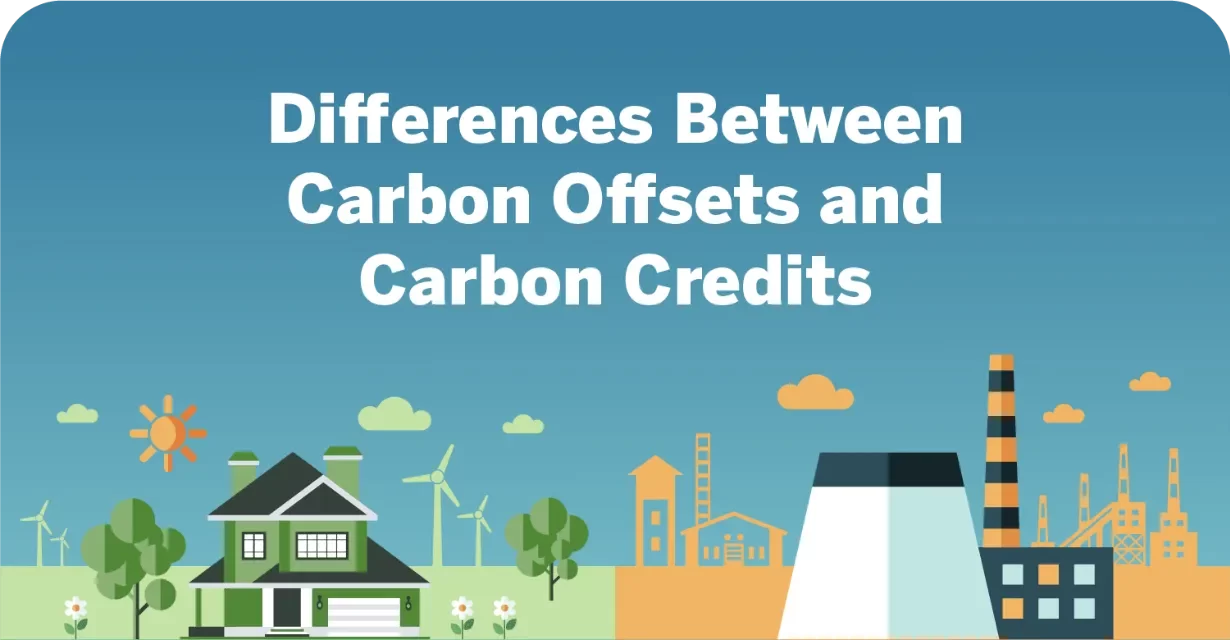Address
Office 101 Calton Centre
Kingsway Road,
Maseru, Lesotho
Work Hours
Monday to Friday: 9AM - 5PM
Weekend: 9AM - 1PM
Address
Office 101 Calton Centre
Kingsway Road,
Maseru, Lesotho
Work Hours
Monday to Friday: 9AM - 5PM
Weekend: 9AM - 1PM

At their core, both carbon credits and carbon offsets are accounting mechanisms. They provide a way to balance the scales of pollution. The big idea behind credits and offsets is that since CO2 is the same gas anywhere in the world, it doesn’t matter where emissions reduction happens.
For both consumers and companies, it makes financial sense to reduce emissions where it is cheapest and easiest to do so, even if that does not involve their own operations.
The instruments do have two major attributes in common:
Carbon Offsets and Carbon Credits Defined
While the terms “carbon credits” and “carbon offsets” are often used interchangeably, they refer to two distinct products that serve two different purposes. Before you begin purchasing either, it’s important to understand the difference between the two and which one will help you meet your goals. Here is a broad definition of the terms:
To help visualize the difference, imagine a water supply polluted by a nearby chemical plant. A “chemical offset” would mean pulling chemicals out of the water to help purify it. A “chemical credit” would mean paying another chemical company to release fewer chemicals into the water, so the overall level of pollution stays the same. Clear as mud? Great.
A Carbon Offset and Carbon Credit Primer
Let’s dive a bit deeper into these products one at a time. Creating a carbon offset involves a fancy term we call “carbon sequestration. Offsets involves CO2 emissions pulled out of the atmosphere and locked away for a period of time.
There is a growing list of ways to do this, including planting forests, blasting rock into tiny pieces, storing carbon in manufactured devices, capturing methane gas at a landfill, and the holy grail of carbon sequestration: using sophisticated technology to turn CO2 emissions into a usable product.
Carbon offsets are produced by independent companies that pull CO2 emissions from the atmosphere. The offsets are then sold to companies that emit (or have emitted) CO2. In a sense, offset-producing companies are directly funded by those companies that emit GHGs.
Carbon credits, on the other hand, are generally “created” by the government. Governments limit the amount of GHGs organizations can emit by placing a cap on them a specific number of tons of CO2 the company can emit. Each of those tons are referred to as a carbon credit.
Companies comply with that cap by reducing the emissions produced in their operations through improving energy efficiency or switching to renewable energy sources. An organization that brings its overall emissions below what is required by law can sell the excess credits to businesses that are unable or unwilling to cut their own emissions to become compliant.
The Two Carbon Markets
There’s one more important distinction between carbon credits and carbon offsets:
Returning to the illustration from earlier, our vital, global goal is to both stop dumping chemicals into the metaphorical water supply, and to purify the existing water supply over time. In other words, we need to both drastically reduce CO2 emissions. And then we work to remove the CO2 currently in the atmosphere if we want to materially reduce pollution.
Source: https://carboncredits.com/carbon-credits-vs-carbon-offsets-whats-the-difference/
Thank you for joining us on this journey to explore the world of carbon credits and carbon offsets. We hope this newsletter has provided you with a deeper understanding of the differences between these two important tools in the fight against climate change.
As we continue to navigate the complexities of sustainability and environmental responsibility, we are grateful for your engagement and support. Your commitment to reducing your carbon footprint and promoting sustainable practices inspires us to keep pushing forward.